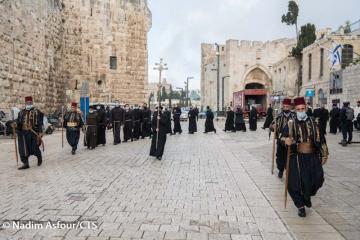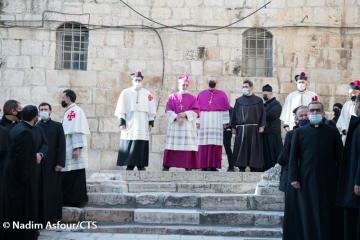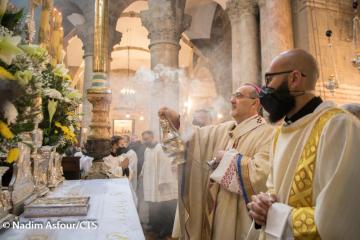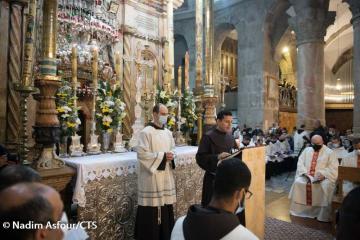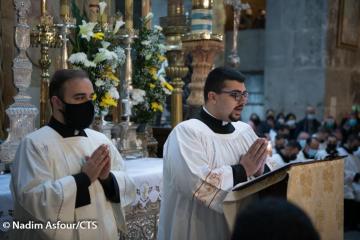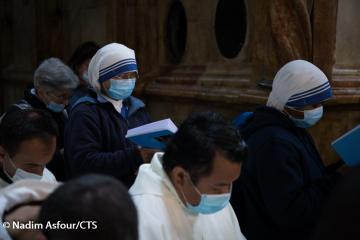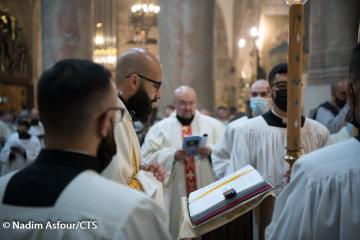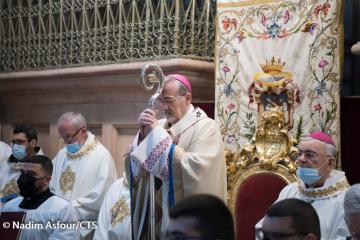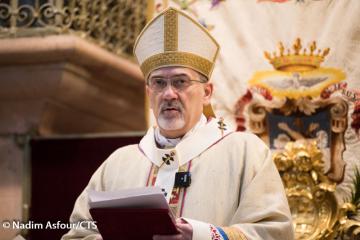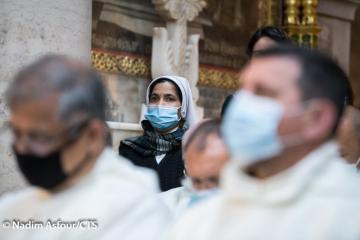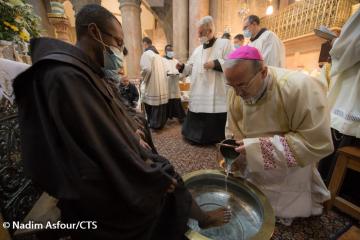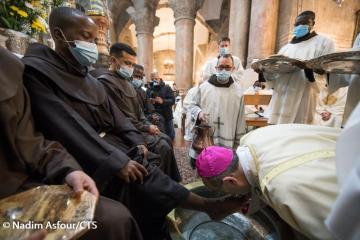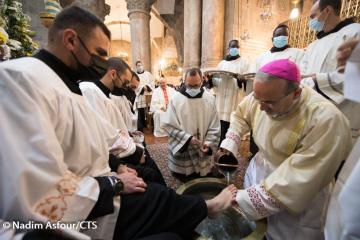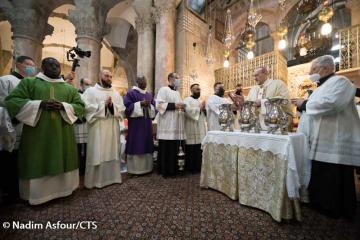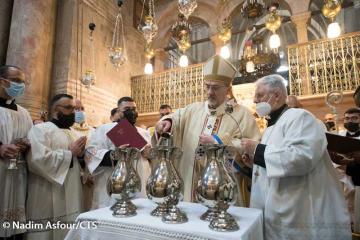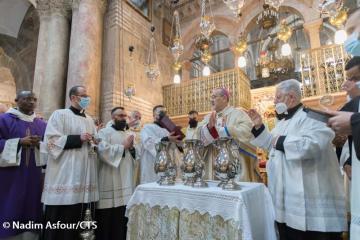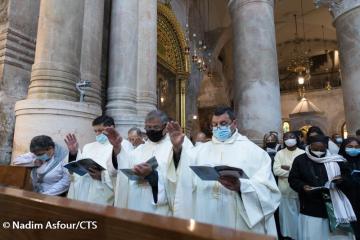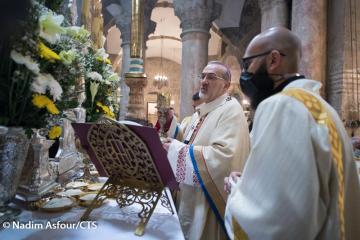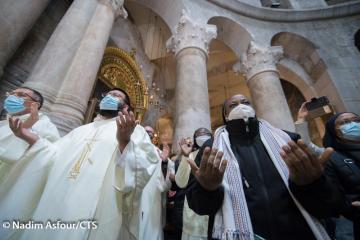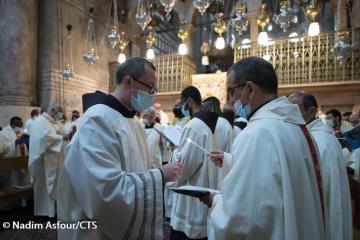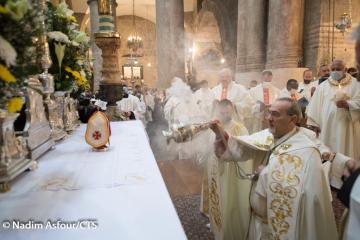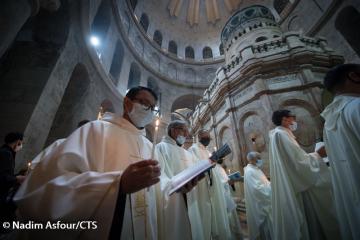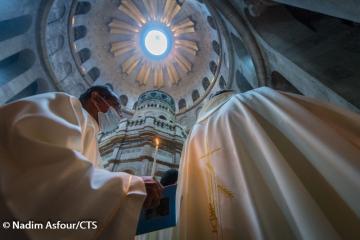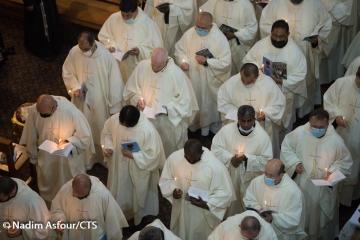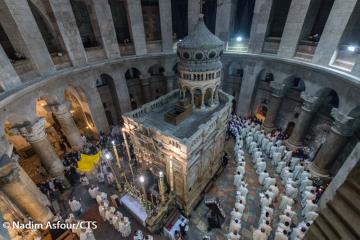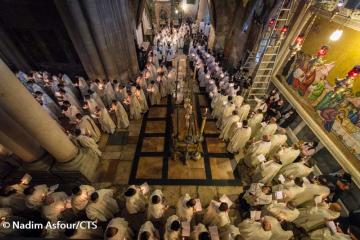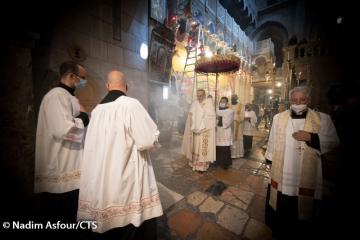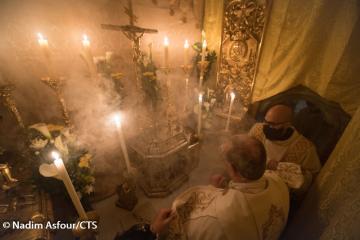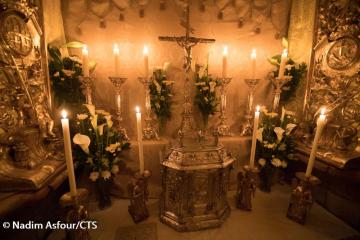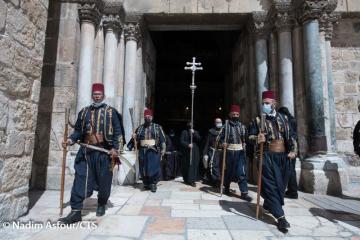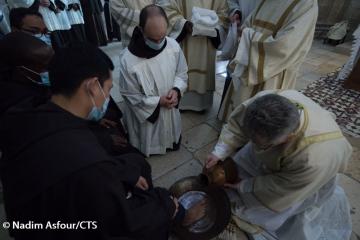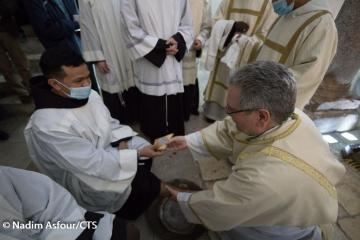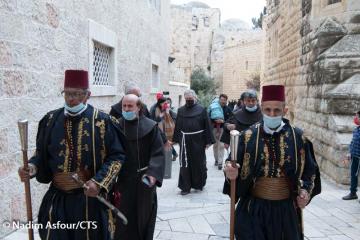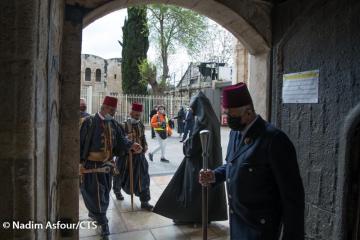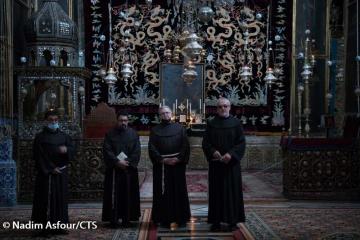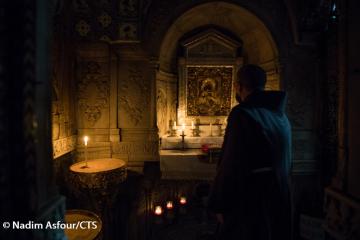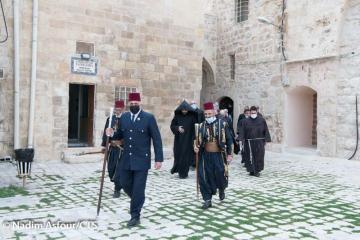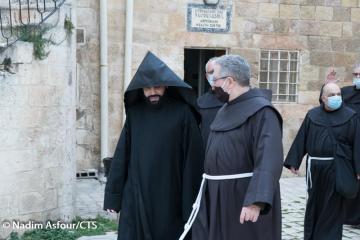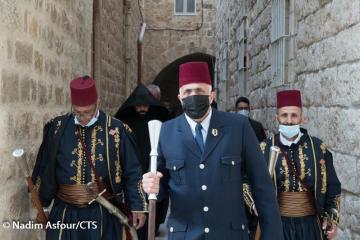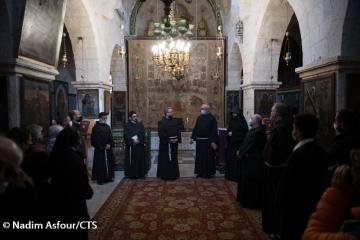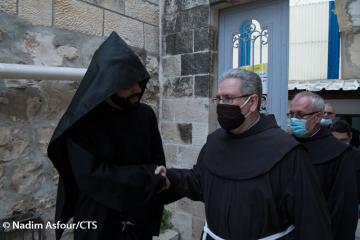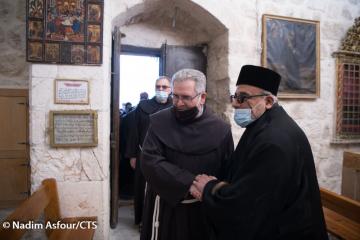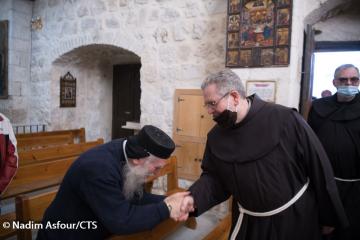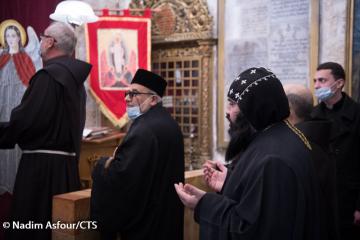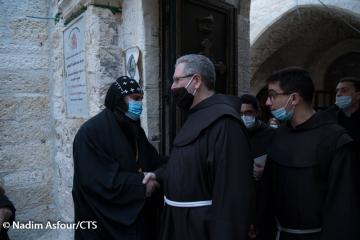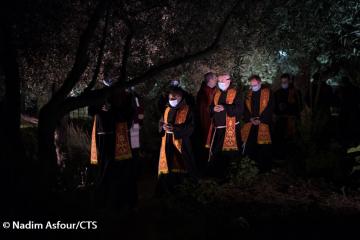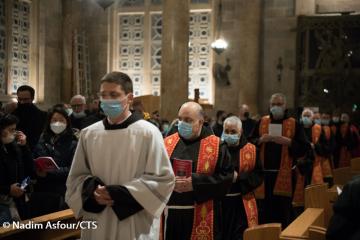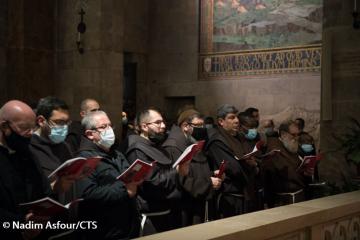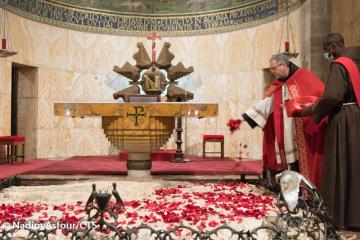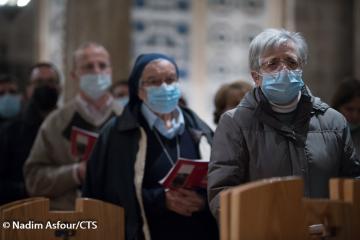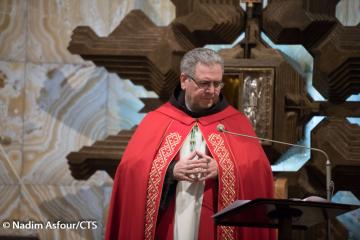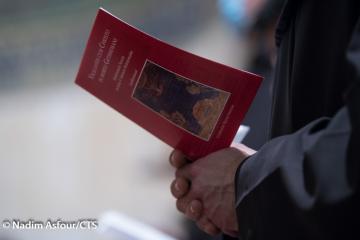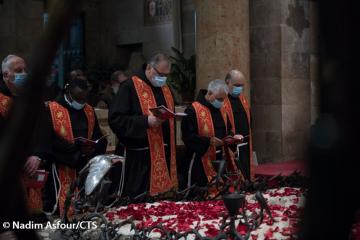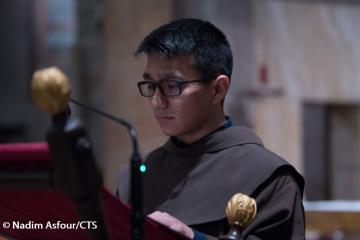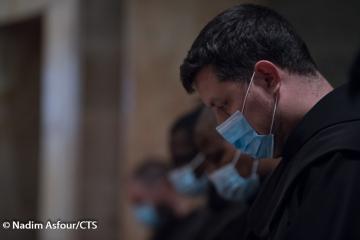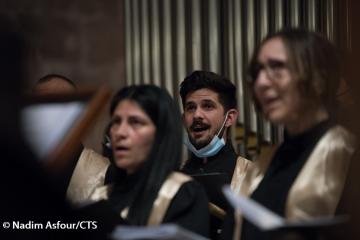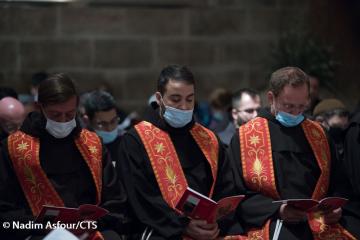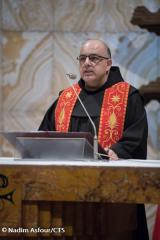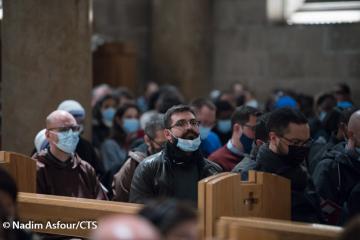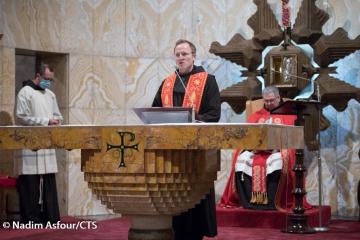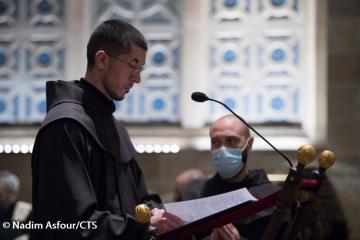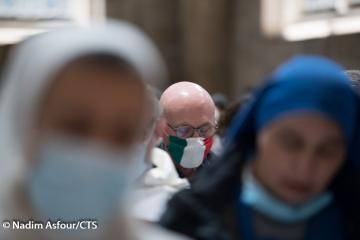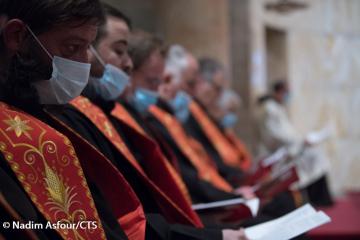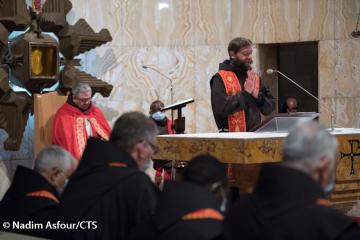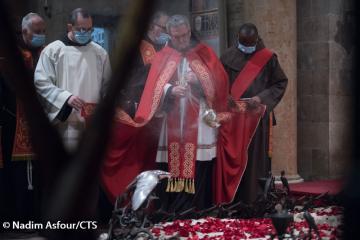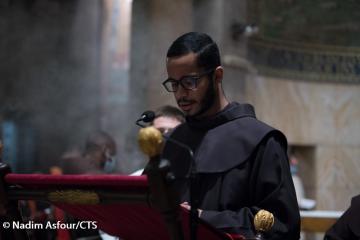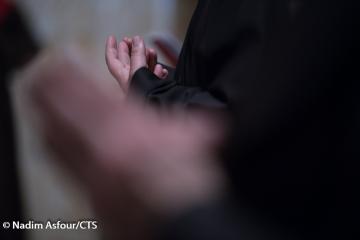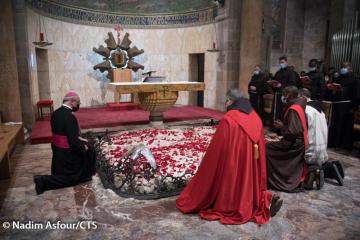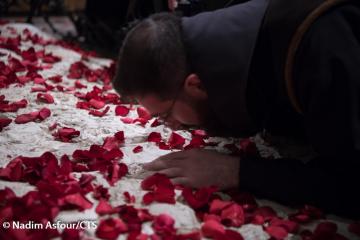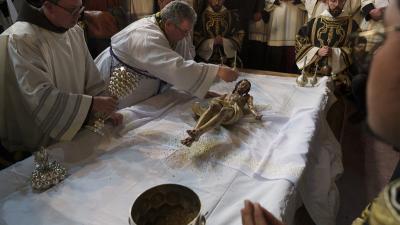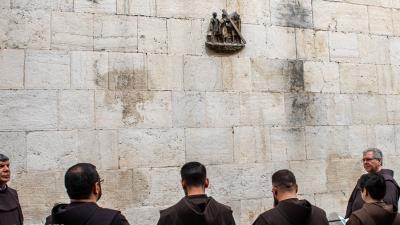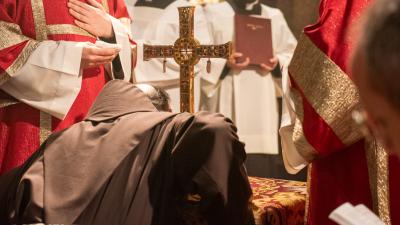
The Church of Jerusalem entered the Paschal Triduum with the Mass at Coena Domini and the Crismal Mass at the Holy Sepulchre. The celebration with which the establishment of the Eucharist, the ministerial priesthood and the love with which Christ loved his disciples, to the point of washing their feet, is remembered, was only the first of the liturgies which, from the morning until the night, marked Holy Thursday in Jerusalem, where the facts narrated by the Gospels took place two thousand years ago.
In keeping with the liturgy of the day at the Holy Sepulchre, presided by the Latin Patriarch of Jerusalem, Mons. Pierbattista Pizzaballa, the sacred oils for the sick, the catechumens and the priests were blessed. During this celebration, moreover, every year the priests renew their priestly vows, which takes place not in a private dimension but in a public one. This is, according to what the Patriarch said in his homily, “an invitation to the people of God to pray for the bishop and the priests,” who often believe “they are the saviours and forget they have been saved.”.
During the liturgy of the Mass of the Lord’s Supper, the Gospel of Jesus washing the Apostles’ feet is read. “This action by Jesus is the real meaning of what the Eucharist is, i.e. the sacrament of loving service, in obedience to the Father, up to death on the cross,” said Mons. Pizzaballa. “At times, we also, like the disciples and like Peter, seem to refuse the grace of God, we do not accept letting Jesus wash our feet. But there is one thing we can be certain about: Jesus continues to risk in choosing us, human sinners, at times impermeable to the grace that flows through our hands.”
The symbolic gesture of the Washing of the Feet was also repeated this Holy Thursday, when the Latin Patriarch Mons. Pierbattista Pizzaballa washed the feet of six seminarians of the Latin Patriarchate in Jerusalem and six Franciscan friars of the Custody of the Holy Land. The song of the Tantum Ergo then accompanied the solemn procession of the Eucharist which for three times went round the Edicule of the Holy Sepulchre, at the end of the celebration.
The evangelical episode of the Last Supper and of the Washing of the Feet took place according to tradition in the room of the Cenacle, on Mount Sion in Jerusalem, where the Franciscan friars of the Custody of the Holy Land go on the afternoon of Holy Thursday.
According to the Custos of the Holy Land, Fr. Francesco Patton, the meaning of this day could be summarized in the words with which the evangelist John introduces the story of the Foot Washing: “Personally, I would translate: Jesus after having loved his people who were in the world, loved them bringing love to fulfilment . [..]. The time of the Passion of Jesus is the time when Jesus brings to its fulfilment the love that the Spirit gives: this is the reason why the Word became flesh”. But what does bringing love to fulfilment mean? Fr. Francesco Patton explained: “In the Cenacle, Jesus teaches us through his gestures and his words: on the cross he will show it to us with his singular way of dying, giving us a mother, giving his life until the last drop of water and blood. In the Cenacle, Jesus teaches it to us by putting his body and his blood into our hands.”
The Custos also reflected on the gesture of Washing the feet and on the gift of the Eucharist: “If the commandment of the love of Jesus were only a moral imperative, it would be impossible for us. In actual fact, in the Cenacle, Jesus allows us to understand why this love, so full, is possible even for people who are fragile as we are. In the Cenacle he gives us his body and his blood so that he can live in us and also make us capable of loving until we make our life a gift.”
In the room where Jesus washed the feet of his disciples, the Custos of the Holy Land repeated this gesture of love, washing the feet of twelve friars, as per tradition.
From the Cenacle, the Franciscans went to the church of St James of the Armenians and the Church of the Holy Archangels, where the friars were welcomed for seven years, after they had been expelled in 1551 from the Convent of the Cenacle where they had lived. “This is a very important place, it is a place of gratitude for the community and for the Armenian Church,” said Fr. Francesco Patton, before setting off for the Syriac Orthodox Church of St Mark. The Church, well known for having been built on the site of the house of Mary, the mother of the evangelist Mark, is the place of the Last Supper of Jesus Christ in the Syriac tradition.
Lastly, on the evening of Holy Thursday in Jerusalem, the prayer of the Holy Hour of Jesus at Gethsemane is celebrated. During the liturgy presided by the Custos of the Holy land, there is meditation on three moments: the prediction of Christ of Peter’s denial and the flight of the disciples, the Agony of Christ in the garden and, lastly, his arrest. About the fact that this was the second Easter in the times of the pandemic. The Custos said:” Like Jesus on the night of Holy Thursday, we feel the anguish that is gripping the heart of the whole of humanity. Let us pray for those who are experiencing the hour of Agony now so that they continue to trust in the Father and give themselves completely into the hands of Jesus like Jesus and together with Jesus.”
Reflection and prayer were also at the centre of the torch-lit procession which, once the celebration was over, left Gethsemane to reach the Church of St Peter in Gallicantu, where the arrest of Jesus and the betrayal of Peter are commemorated. After the songs along the way, in the meditation on the denial of Jesus which continues every day, silence fell over the crowd and the gardens of St Peter in Gallicantu.
Beatrice Guarrera


